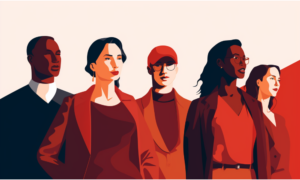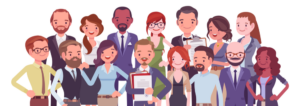Diverse workforces
- 5 Min Read
The changing world of work is upon us, and with it comes challenges. For instance, I do not envy the human moderators working for Facebook. On the one hand, they have to uphold Facebook’s mission of embracing diverse views. On the other, their job is to censor views which are harmful to society and they have just seconds to tell the difference. Business could learn from these numerous challenges.
- Author: Tania Coke
- Date published: Jun 6, 2018
- Categories

A similar challenge is faced by many companies today. Take the case of James Damore at Google. Damore wrote an internal memo criticising the company’s diversity policies and justifying the predominance of male employees on the basis of biological differences between men and women. Google had to decide whether Damore’s memo should be punished as disrespectful towards women or tolerated on the basis of freedom of speech. They chose the former. Damore and his supporters saw this as proof that the organisation had gone too far in its attempts to be inclusive and that Google was no longer a place where people felt able to share opinions freely.
 Setting aside the particularities of the Damore case, the story raises an important question facing HR: how to ensure that policing of discriminatory attitudes does not end up stifling debate. More generally, how to ensure that greater diversity in the workforce leads to more openness, tolerance and creativity, and not less.
Setting aside the particularities of the Damore case, the story raises an important question facing HR: how to ensure that policing of discriminatory attitudes does not end up stifling debate. More generally, how to ensure that greater diversity in the workforce leads to more openness, tolerance and creativity, and not less.
The nature of words
The difficulty is, for me, tied up with the nature of words. As any workplace mediator will tell you, forming judgements on the basis of words alone is a dangerous business. Words are labels that we use to express private meaning. There is a certain amount of public consensus as to what words mean. But only up to a point. My understanding of the word “love”, for instance, is based on my own experience of what I call “love”, and my exposure to the word over the course of my lifetime. Words mean different things to different people. We should be careful not to treat any words, including “inclusion” and “equality”, as sacrosanct.
Luckily, unless we are under the same kind of time pressures as Facebook’s moderators, we don’t have to take words at face value. In workplace mediation, we have the luxury of a full day to explore the impact of language and what parties in conflict mean by the words that they use. Even in a busy work environment, there are things we can do to get beyond the surface. We can create opportunities to spend time with the author of the words, ask them questions, listen to the tone of their voice and observe their facial expressions and body language. This will help us to build a deeper understanding of what was meant by their words.
In some cases, we may find that the offending words are indeed indicative of an attitude we find distasteful but, as a result of getting to know the person better, we are able to understand why they hold that attitude. We may even recognise that we too might have developed such an attitude if we had lived the life they have.
It can also be helpful to remember that most people, at times, say things with which they themselves disagree. I often say things in the heat of the moment which later I regret. I also sometimes say things I don’t actually believe, in an attempt to make a certain impression. And sometimes the words just come out wrong. So, as individuals, we can decide, when confronted with apparently discriminatory language, to postpone making a judgement until we’ve taken the time to investigate what was really meant.
Conflict faultlines
There are also things that can be done at the level of the organisation, to preserve the twin goals of freedom of speech and inclusiveness. Every organisation has what at Consensio we call “conflict faultlines.” These are the controversial issues around which opinion is polarised, often creating opposing camps within the organisation. These may be specific to the organisation (such as whether to endorse the CEO’s new corporate policy) or not (such as Brexit). Conflict faultlines are usually not difficult to spot. But it is rare for organisations to do anything about them. There are ways to bring these controversial issues out into the open, to help people get beneath the surface of the issue. This could be done through facilitated conversations in which people are invited to express their opinions, listen to one another and engage in dialogue to build mutual understanding. It can be done at the level of the team, or at the level of the organisation, through large townhall style meetings.
Growing numbers of organisations are offering communication training to foster the skills and attitudes that will promote healthy debate of this kind. Most people are not trained to communicate in this way. We easily get outraged and jump to conclusions without bothering to explore the underlying intentions and meanings. But, through training, we can learn to resist the urge to form snap opinions and engage others with an open mind in order to understand them better. We can also train people to express themselves better to avoid causing offence or outrage. Frameworks such as nonviolent communication can help people convey their feelings without blame or judgement. Role plays carried out in the safety of the training room are an opportunity to find new ways of communicating about sensitive topics. By practicing these courageous conversations in a training room, we will be more able to have them in the workplace.
Lastly, organisations can make efforts to ensure that there are role models capable of demonstrating these kinds of communication skill, especially amongst senior leadership. If leaders can be seen engaging with differences of opinion – and enquiring into those opinions even when on the surface they seem objectionable – the chances are the rest of the workforce will follow suit. If leaders do the opposite, it’s almost impossible for the organisation to create a culture of healthy debate.
Diversity in the workplace is undoubtedly an opportunity for greater creativity and tolerance. But to build a truly inclusive corporate culture, there is a lot of work to be done to get beneath the surface of our differences.
Tania Coke, Senior Mediation Consultant, Consensio









